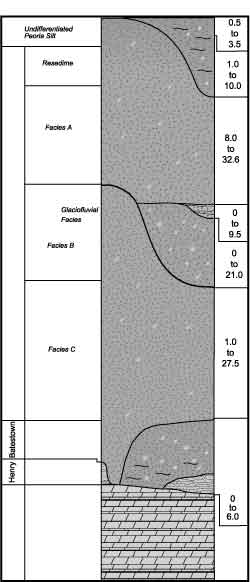 |
|
Kesich finds the Virtue in Water by Kurt Riesselmann
The Department of Energy selected Kesich to be a member of a Technical Advisory Review Team that works with Native Americans in New Mexico to establish an independent monitoring program. The team, established in 1999, helps Pueblo Indians living near Los Alamos National Laboratory to examine whether operations at the laboratory have caused pollution.
"There is a lack of trust," said Kesich, who has a Master's degree in hydrology from Northern Illinois University. "The Pueblos requested and received information from LANL, but they are concerned that they might not have obtained all information they would like. For their peace of mind they decided to start their own environmental monitoring program."
In 1992, the Cochiti, Jemez, San Ildefonso and Santa Clara Pueblos, the four Native American communities closest to LANL, signed formal accords with the Department of Energy. As part of the accords and subsequent agreements, the Pueblos have received DOE funding since 1996 to develop and implement environmental monitoring programs for air, soil and water.
The DOE team of technical environmental experts, including Kesich, annually reviews the Pueblos' progress and offers guidance and scientific input.
"DOE asked us to take the viewpoint of being a Pueblo member," Kesich explained. "The Pueblos prefer to have their own tribal people do the work, perhaps bringing in Indians from other Pueblos. We are assisting people from their own nation to do the job."
Kesich knows the challenges of setting up a monitoring program. He has spent the last five years developing a comprehensive groundwater program at Fermilab.
"Until 1996, the Fermilab groundwater monitoring program relied on old farm wells," recalled Bill Griffing, head of Fermilab's Environment, Safety and Health section. "A lot of these wells weren't necessarily in the best locations to determine whether we were affecting the groundwater. Our data grid had big holes. Ideally, you want wells close to potential problem areas. Paul recognized and addressed the issue. He put in lots of effort to strengthen the program."
Kesich established a network of 63 new monitoring wells, which go through approximately 60 feet of glacial silt and clay into the groundwater-carrying bedrock formation underneath the Fermilab site. Using geological analyses and computer simulations of water flow, Kesich and his colleagues have investigated the vulnerability of the Fermilab site to contamination.
"Today our monitoring data is far more comprehensive than it was five years ago," said Griffing. "Now all monitoring wells are strategically located. The sampling from our wells indicates that we are below the limits of detection of contaminants such as tritium in our Class-1 groundwater, the drinking water located in the bedrock.
Tritium, a radioactive isotope of hydrogen, is a concern at Fermilab. Although the laboratory has no nuclear reactor and builds no weapons, high-energy proton beams created by accelerators can produce small amounts of tritium when hitting beam targets or other devices which may deflect beam particles into the surrounding underground area. To minimize this possibility, scientists install shielding material around experimental areas.
Experts like Kesich carefully review the accelerator experiments and look for possible environmental impact. They simulate how contaminants may enter the ground and move through different layers of rock. In addition, they regularly collect groundwater samples and send them to external laboratories for testing.
"The federal environmental standards are the standards of Western cultures," Kesich said. "They may not be appropriate for the tribes, which have, for example, other uses of plants than we do. Since tribe members are not allowed to share many aspects of their ancient life style, we must help them to establish standards on their own."
Gaining the trust of the Pueblo Indians is probably the most important aspect of Kesich's work with the tribes.
"When I visit the Pueblos, I pretend I'm going to a foreign country," Kesich said. "I am very respectful of their culture. They are in a renewal process of educating their kids about their own culture. But they don't live in a bubble: they realize it's the 21st century."
Officials at DOE have recognized Kesich's important contributions to the Pueblo project beyond his technical expertise.
"Paul's personality and approach as a Review Team member have been greatly appreciated," said Patricia Coffin, the program manager for the Los Alamos Pueblo Project. "Paul quickly made the Pueblo staff feel at ease, thereby allowing more open and trusting dialogue. This has led to more frequent and open dialogue between the Pueblo staff and LANL."
Both DOE and the Pueblos consider the past reviews a success, strengthening the relationship between the two.
"Paul's professionalism and invaluable assistance have been key elements in this success," Coffin said.
Fermilab's Environment, Safety and Health Section: http://www-esh.fnal.gov/home/esh_home_page.html
Los Alamos National Laboratory: http://www.lanl.gov
Indian Pueblo Cultural Center: http://www.indianpueblo.org
|
| last modified 8/24/2001 by C. Hebert email Fermilab |
FRLsDFx9eyfrPXgV
 Fermilab hydrologist Paul Kesich works every day to understand the ecological importance of groundwater. But his latest assignment has gained him a unique insight into water's symbolic importance as an issue of trust.
Fermilab hydrologist Paul Kesich works every day to understand the ecological importance of groundwater. But his latest assignment has gained him a unique insight into water's symbolic importance as an issue of trust.
 The Pueblo Indians hope to establish a similar monitoring program. When offering his advice, Kesich had to take into account the very different geology of the Los Alamos area. In addition, he encountered some unique challenges.
The Pueblo Indians hope to establish a similar monitoring program. When offering his advice, Kesich had to take into account the very different geology of the Los Alamos area. In addition, he encountered some unique challenges.